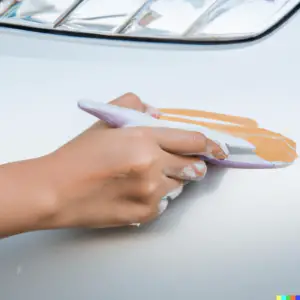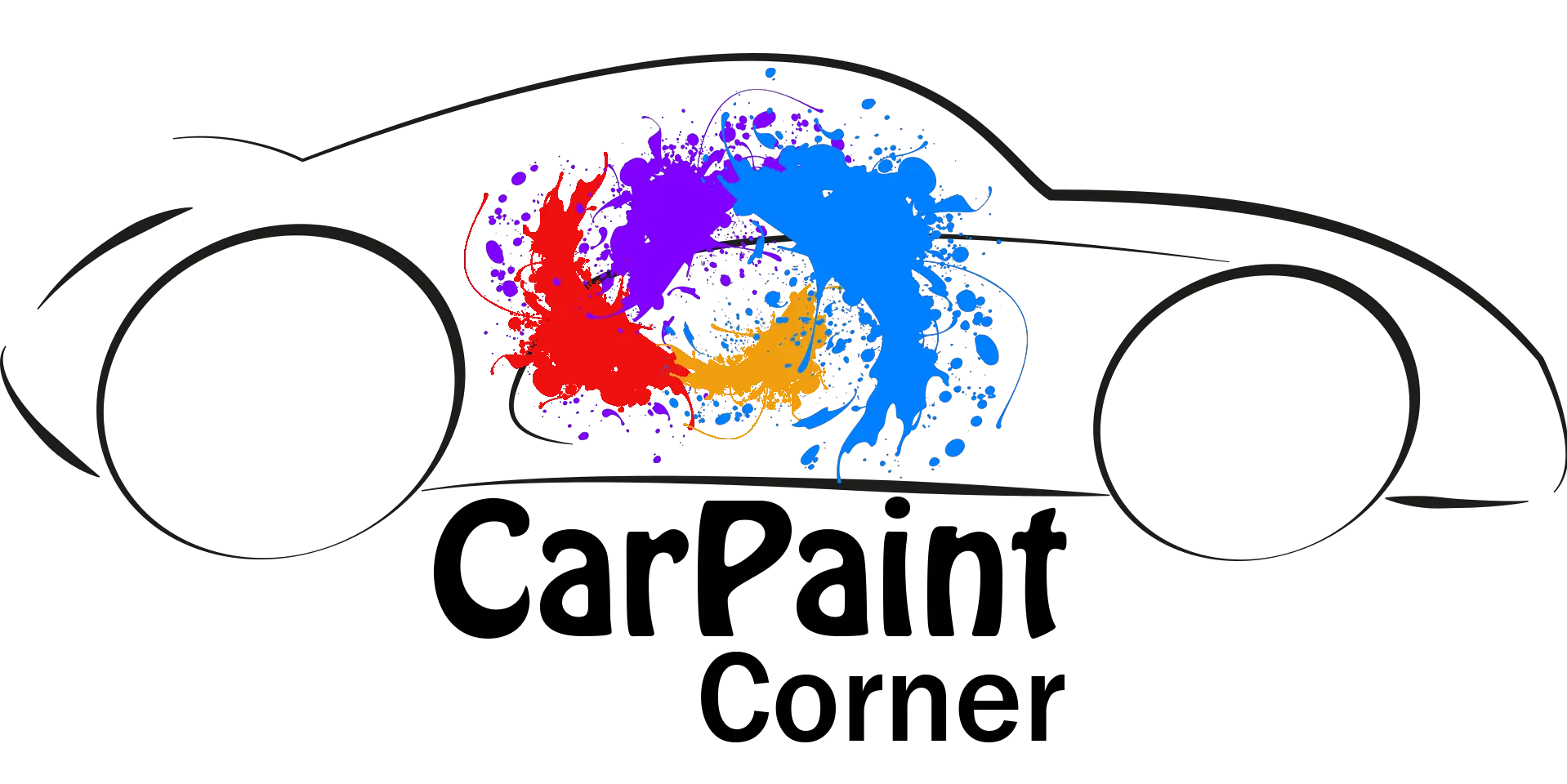This post may contain affiliate links which means I may receive a commission for purchases made through links.

Minor car paint scratches can be very frustrating as they can cause significant damage to the finish of your paintwork over time. In addition, they can reduce the resale value of your car, plus they’re costly to repair.
Luckily, there are some incredible DIY methods out there you can use to fix minor scratches before they get too deep. For instance, you can use a car paint touch-up kit to buff these scratches with ease. Also, some DIY enthusiasts recommend using some toothpaste to get rid of these scratches.
But, does this approach really work? Can toothpaste remove scratches from car paint? Or will it end up damaging the car paint instead? Well, stick around to find out!
Different types of car paint scratches
Before you try to remove a scratch with toothpaste, you first need to identify the type of car paint scratch you’re dealing with. This is because there are several types of scratches, each having its own removal process.
In general, a car paint scratch occurs when a hard material cuts into a softer material. The type or level of scratch is usually determined by how deep the scratch is embedded in the surface.
Removing deeper scratches requires more aggressive methods or sandpaper, while some thin scratches can easily be buffed out with a cutting or polishing compound.
With that in mind, let’s look at the 4 common types of scratches found on car paint surfaces;
Clear coat scratch
Also known as a swirl mark, a clear coat scratch refers to a scratch that occurs on the outer layer of the car, not the paint itself. As you know, the clear coat protects the car paint against environmental damage.
However, it’s still vulnerable to scratches from various sources such as dust, using dirty towels when washing the cars, car wash techniques, or even a pet jumping on the car surface.
Due to their microscopic nature, these types of car paint scratches are quite difficult to see. But if you look at the car surface at an angle, light usually displays the imperfection.
Embedded paint scratch
If a car paint scratch penetrates the cleat coat, it’s categorized as an embedded paint scratch. You can easily identify this type of paint scratch by checking if there is another color/pigment at the bottom of the scratch.
If you cannot see bare metal or the primer, then the scratch has been cut into the car paint.
The main drawback of these types of car paint scratches is that they’re not easy to remove. However, you can fix them by filling the scratch with a polishing compound, followed by sealing it with a paint sealant, ceramic coating, or wax.
Primer scratches
As the name suggests, these types of car paint scratches go into the primer layer. And as you would expect, these scratches aren’t easy to fix with toothpaste. Instead, you would need to tape off the entire section of the car paint with the scratch and sand it down up to the primer level.
Afterward, apply multiple layers of auto paint matching the rest of your car surface, then apply a layer of clear coat over the base coat.
Bare metal scratches
Bare metal scratches extend all the way to the metal surface, exposing the car surface to corrosion and other harsh elements. For that reason, it’s important to fix these types of scratches right away.
Otherwise, the metal surface will be exposed to moisture and other contaminants, leading to oxidation and rust formation.
Can you use toothpaste to remove car paint scratches?
Yes, you can use standard toothpaste with a minor grit to buff out minor clear coat scratches. However, this approach only works on shallow, minor clear coat scratches that have not fully penetrated into the car’s base/ color coat.
So, if you’re dealing with other types of car paint scratches like embedded or primer scratches, contact a body repair shop or look for other methods since they’re too deep to fix with toothpaste.
Alternatively, you can get rid of clear coat scratches by applying a cutting or polishing compound over the surface using an electric buffer. Basically, this approach will cut into the clear coat to level it out, until the scratch is filled or removed by the clear coat or polishing compound residual.
Overall, toothpaste isn’t ideal for fixing any other type of car paint, especially if it extends to the actual paint. Instead, use more aggressive methods of car paint correction if the scratch is deep into the clear coat.
For instance, you can smoothen the surface with light-grit sandpaper, then polish it to fill the light scratches.
How toothpaste works to remove clear coat scratches
Toothpaste contains abrasives that act as polishing and cleaning agents that make up about 40% of the total ingredients. These abrasives are usually made from silica or chalk such as sodium metaphosphate, calcium pyrophosphate, zirconium silicate, dicalcium phosphate, and calcium carbonate.
As a result, toothpaste will act as light-grade sandpaper when you apply it to a damp microfiber cloth, helping to remove minor scratches.
At the same time, it helps to sand down uneven surfaces on the clear coat by cutting into the surfaces to fill the small gaps and scratches. However, this approach may not be that efficient on harder surfaces such as clear coats of car paint.
All in all, it’s abrasive enough to remove the foreign car paint marks but gentle enough to avoid damaging the car’s clear coat.
How to buff clear coat scratches with toothpaste
Here’s a step-by-step guide on how to remove clear coat scratches from your car paint surface with toothpaste;
Wash & dry the car thoroughly
The first thing you need to do before you remove the scratches with toothpaste is to thoroughly wash and dry the car. This step helps to prevent contaminants from creating more scratches on the car’s paint. More importantly, scratches are more visible on clean surfaces, allowing you to remove them more effectively.
Identify the car paint scratches
Next, inspect the car to determine the type of car paint scratches you’re dealing with. If you notice that the car has a lot of deep scratches, consider more aggressive methods for scratch removal or take it to the pros.
However, if you’ve got clear coat scratches, you can move on to the next step.
Prepare the materials
The main benefit of this car scratch removal method is that the materials needed for the task are readily available. You only need some water, a soft, dry cloth & whitening toothpaste will low to medium Relative Dentin Abrasivity.
This type of toothpaste offers a better chance of removing car paint scratches, unlike harmfully abrasive toothpaste which might damage the paint.
Apply the toothpaste
Squeeze a pea-sized amount of toothpaste onto a slightly dampened microfiber cloth and rub it into the scuff/ scratch mark. Start working in small circles on the scratched surface, while being fairly gentle with your buffing.
As mentioned earlier, toothpaste has a fine grit to it. This allows you to remove clear coat paint scratches without damaging the car surface. However, if the scratches are a little deeper, carefully apply a little more pressure until they start to disappear.
If the scratches remain, repeat the above process up to 2 more times. However, make sure you rinse and dry the surface between applications to monitor your progress. Note, that repeating this process more than twice may cause lasting damage to the paintwork.
Rinse the area thoroughly with soapy water
After rubbing out the scratches, thoroughly rinse the surface with soapy water to remove any excess toothpaste. Next, dry the area with a dry microfiber cloth, before waxing the surface to protect it from future damage.
Conclusion
Toothpaste doesn’t contain harmful ingredients that can damage car paint. Instead, it contains abrasive ingredients, making it a great option for removing minor scratches that don’t go deeper into the clear coat.
Nonetheless, toothpaste may not be that effective if you’re dealing with deeper scratches. In that case, the best option would be to use a polishing compound or a clay bar that is specifically designed for car paint scratch removal.

Leave a Reply